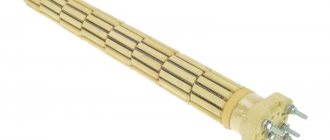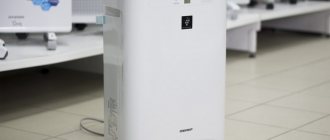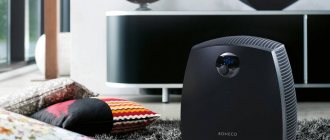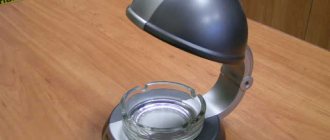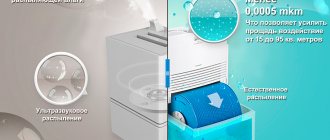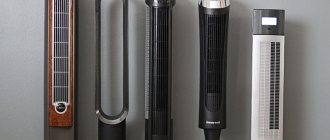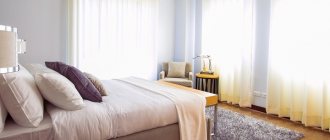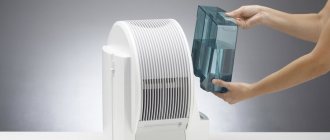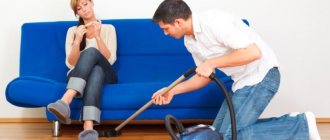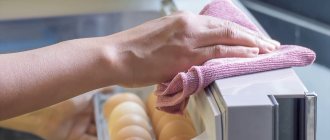Doctors, who interpret the causes of this disease very evasively, see its main cause in heredity. If one of the parents is sick, he passes on an allergic predisposition to the child with a probability of 30%, both - up to 70%. Regardless of genetic predisposition, this disease can occur in pregnant women. There are some specific conditions that cause allergies. It could be:
- Disordered eating;
- Anxiety and stressful situations;
- Overdose of drugs;
- Environmental problems of the location of your home;
- Consequences of chronic diseases of the lungs and nasopharynx;
- Prolonged stay in places where household allergens are stored;
- For infants - switch to artificial feeding.
There are many types of allergies, but hay fever is especially common - a seasonal allergic reaction to plant pollen. It is considered one of the most severe cases of allergies and is the most widespread. Sometimes an annoying disease takes us by surprise. You can simply buy the wrong flowers and literally an hour later all the symptoms of the disease appear:
- The eyes begin to water;
- I want to sneeze;
- A runny nose and nasal congestion appear;
- There is a soreness in the throat;
- Weakness and fatigue are far from the last items on the list of unpleasant symptoms.
A person with hay fever will never want to walk through flowering meadows, avoid the park, or sit by a flower bed. But when the symptoms continue in a closed apartment, it means that all is not well with the ventilation at home.
Seasonal allergy problems
Everyone knows where pollen comes from in the spring, but not every plant provokes allergic reactions. The most terrible enemy of allergy sufferers is the birch tree, which begins to bloom in early May. Alder, oak, and walnut catkins are annoying, but less dangerous. A powerful allergen is released during the flowering of cereals, which include simple lawn grass. Coinciding with the flowering period of the poplar, this weed causes a powerful allergic reaction, incorrectly popularly called an allergy to poplar fluff. At this time, it is necessary to reduce your vital activity, buy yourself an air purifier for allergy sufferers and spend more time at home. If something unpleasant does happen, swelling occurs, breathing becomes difficult, or other alarming symptoms appear, use the following algorithm of actions:
- Call an ambulance, and while waiting for the doctor to arrive, turn to your neighbors for emergency help;
- If you guess what kind of allergen caused the attack, it is important to immediately clean the air in the apartment, if possible using filtering equipment, air handling units, and ventilators. cleaners, etc.;
- When a rash appears on the body and symptoms of urticaria develop, antihistamine ointments will help you. Sometimes it is possible to cope with the disease by using hormonal corticosteroid creams;
- During the period of exacerbation of symptoms, refrain from using cosmetics. They may contain substances that provoke allergy attacks.
Knowing the weak points of your body, you should take preventive measures. Take antihistamines before flowering begins, in late March-April. Replace regular cosmetics with special, hypoallergenic ones. There are some everyday rules that can help reduce allergy symptoms:
- Make it a rule to take a shower twice a day, wash your face more often, wash your hands, especially when you come home;
- Close windows and doors tightly, using fresh air ventilation devices to ventilate the apartment;
- When returning from the street, change your clothes as carefully as possible so as not to scatter pollen throughout the room;
- You will have to dry your clothes in the bathroom, and you will have to exclude balcony and especially street drying;
- Buy an air humidifier, the price of the device is not so significant, but it can bring pollen and dust into the apartment;
- On a hot, dry day when it’s windy outside, it’s better to stay at home. In such weather, the concentration of flower spores in the air is especially high;
- To cleanse the mucous membrane of allergens, rinse your nose with saline solution;
- When going out into the garden and flower beds, wear personal protective equipment - goggles, respirators.
Does an air purifier help with allergies?
There is hardly a definite answer to the subtitle question; it all depends on the type of allergy and the technical characteristics of the cleansing device. First of all, we mean the characteristics of the filters of a particular device. Let's look at the most common types of allergies and select the appropriate types of air purifiers. Most often, allergy sufferers are irritated by:
- Flower pollen is visible to the naked eye. Its size is less than 10 microns, like pet dander. Only HEPA and electrostatic filters effectively filter such particles. The latter successfully remove particles larger than 0.3 microns from the air. The large catch surface allows them to remove 85-95% of pollen and dander. For electrostatic devices there is no problem of replacing filter cartridges. They ionize the air, thus strengthening our immunity. Purifiers with an air washing function effectively remove seasonal pollen. Helping allergy sufferers during the spring-summer flowering period, in winter they are useful as apartment humidifiers. When choosing the best option for combating flower pollination, allergy sufferers should pay attention to a purifier with HEPA filtration, which removes up to 99.9% of pollen, dander and other dust components. This degree of purification will leave no chance for the disease. To maintain the efficiency of the HEPA filter at the specified level, do not forget to change it once a year.
- Dust is the most common allergen with particle sizes less than 0.3 microns. Its smallest components are visible only through a microscope. Because of their ability to penetrate deeply into the lungs, they are considered the most dangerous. If you have a dust allergy, you should carefully select the purifier model. The most dangerous components of dust are considered to be the waste products of dust mites. Miniature insects, invisible to the naked eye, live everywhere, spreading microscopic excrement in the air. Conventional filters do not hold them back, and if this happens, they manage to have offspring there too. Electrostatic filters are considered one of the effective means of combating harmful mites. Purifiers that have an air ionization function completely kill ticks. Ozone, as a powerful oxidizing agent, can kill not only dust mites, but a significant part of other microorganisms, viruses, mold;
- Shedding pet hair is also an allergen. It is so dangerous that it required the development of a special vaccine. You don't need super fine filtration to remove it from the air. The wool is removed by a pre-cleaning filter. It is important that the filter surface area is larger so that the pre-filter can work at maximum performance. In this case, heavy wool is more easily absorbed. By causing air to move rapidly, the purifier repeatedly passes it through the filter, removing allergens down to the last hair.
Air humidity for allergies
In a polluted human environment, conditions are created for an increase in the number of aeroallergens and an increase in tissue hyperreactivity of the respiratory tract. In addition, the number of airborne allergens, which cause the development of allergic respiratory forms, increases.
With climate change, there is an increased formation and increase in the concentration of pollen in the air and its properties change. All this helps to increase the sensitizing activity of aeroallergens.
Air humidification will help fight the army of allergens. A noticeable increase in allergic exacerbations has become especially noticeable in recent decades. Atopic dermatitis, bronchial asthma, allergic rhinitis - alas, these names of diseases are heard more and more often
The dust that settles at home, along with chemical pollutants, also includes other harmful agents: dust mites, fungal spores, and numerous microorganisms. All this biological collection often leads to chronicity of these diseases.
Even without going into the complex mechanisms of the development of such pathologies and a thorough analysis of predisposing factors, it is necessary to pay attention to the importance of regular wet cleaning of living rooms.
Normalization of climatic parameters to create a comfortable environment for humans, and this is healthy and clean air - a necessary condition for an active human life.
Only regular wet cleaning will help cope with dust in which dust mites, fungal spores, and numerous microorganisms live
The connection between household allergies and sensitivity to house dust was established back in the 60s. Since then, regular studies have shown that asthma may be preceded by symptoms of allergic rhinitis. 70% of people with dust allergies develop asthma within 8 years.
Based on these studies, it was concluded that there is a direct correlation between some types of allergies from the indoor microclimate and air pollution. The development of technology makes it possible to reduce the “pathogenic” load on the body in simple ways.
In dry air, allergens spread more actively. In addition, with prolonged stay in a room with dry air, the immune system is weakened. Do you suspect an allergy? Buy a humidifier
What can fly in dry air:
- dust with microorganisms and fungal spores;
- pollen in spring and summer flying from windows;
- pet hair and epidermal particles.
Dry air contains an excess of positively charged ions, which is why dust particles may not settle for hours, which creates unfavorable conditions for allergy sufferers and for patients with various pulmonary diseases.
If there is an air humidifier with an ionizer in the room, then this entire mass becomes heavier due to the moisture with which it is saturated and falls down or is attracted to positively charged surfaces.
The moistened dust and dirt are then removed through daily wet cleaning (recommended for allergy sufferers). Thus, for allergy sufferers, humidifiers create a purified and humidified air environment.
To ensure a healthy microclimate in your apartment, buy the right humidifier. To furnish a nursery, it is better to purchase a safe and virtually silent device.
If for healthy people the recommended air humidity in a living room should be 50-60%, then for allergy sufferers it should be 40-50%. Otherwise, they will be bothered by various problems - rhinitis, various inflammatory processes. Especially for patients with respiratory allergies.
Is a humidifier effective?
When answering the question whether there is special climate control equipment for allergy sufferers, we have already mentioned humidifiers. Doctors always recommend wet filtration methods when it comes to pollen allergies. These can be humidifiers themselves, air purifiers with humidification functionality, vacuum cleaners with aquafiltration. The operating time of a vacuum cleaner is not so long that it can somehow influence the humidity of the room, but humidifiers are actually capable of increasing the concentration of water in the air.
In winter, heating operating at full power dries out the air to a critical 10-20%. The mucous membranes of the nasopharynx dry out, become crusty, and their protective functionality is reduced, opening the way for allergens into the human lungs. The body is especially defenseless during sleep, when a person does not control the situation, cannot wash his nose, rinse his mouth, etc. WHO recommends relative humidity levels in residential premises of 40-70%. This necessary condition for a healthy microclimate ensures the functioning of the protective functionality of the mucous membranes of the nasopharynx. This way, an air purifier humidifier kills two birds with one stone—it removes pollen and prevents your sinuses from drying out.
The most popular air supply units, breathers and ventilators, do not allow allergens into the house, but negatively affect the level of humidity in the room, drying out the air supply when heated. This deficiency is compensated for by humidifiers, which are presented in a wide variety of climate control equipment on the market. Monofunctional humidifiers operate on the principle of mechanical, steam and ultrasonic humidification. They do not purify the air, but only saturate it with water vapor, so they should not use the patient’s preferences. Which humidifiers will best help solve allergy problems:
- Devices in which the humidification function is combined with ionization have proven to be especially effective. The charge of the ions is transferred to pollen, mite dust, and other allergens, which settle on the surface of the device with the opposite charge;
- At the same time, air washers humidify and clean the air space of the apartment. A simple device and easy maintenance contribute to the growth of their popularity. If you add water in time and rinse the drum with discs from dirt, the device will help the patient cope with allergy attacks;
- Advanced air conditioners often have a humidification function. But while this option is undoubtedly useful for healthy people, allergy sufferers should treat it with caution. With incompetent maintenance, colonies of bacteria and, most dangerously, mold fungi, which are considered the strongest allergens, can settle on the indoor units and filters of air conditioners.
Dry air causes a runny nose, which can last throughout the heating season.
It happens that a person is not sick, but there are cold symptoms. This happens due to dry air. During the cold season, the humidity outside decreases along with the temperature. The radiators warm the house, but in the heat the moisture evaporates faster from the skin and mucous membranes, the skin, nose and throat dry out. The body tries to protect them: the eyes are watery, the nose is running, the throat is sore.
An additional problem is created by dust, animal hair and other irritants, which, at low humidity, float in the air longer and do not settle. They additionally load the body's defense system.
The better the thermal insulation of the apartment, the healthier the air in it will be in winter.
Cold and dry air from the street leaks into the room through old windows and ventilation systems. The room cools down - the owners turn the thermostat to maximum - the humidity drops even more. To prevent this from happening, the apartment is being prepared for cold weather in the fall.
Long, hot showers also cause dryness.
Heat steams the skin and mucous membranes, moisture release increases, and dryness increases. A lower water temperature will help avoid this: warm, not scalding hot. And also softer soap. In addition, doctors advise people with dry skin to shower for no longer than 15 minutes.
Emergency help for the body is to drink plenty of fluids.
Plain water will help keep your skin and mouth moist throughout the day. Those who don't like water add a little tea, juice or a slice of lemon for flavor. The main thing to remember is that coffee and other tonic drinks compensate for the lack of moisture much worse.
The solution to dry rhinitis is a humidifier.
Comfortable humidity levels are an individual choice, but the World Health Organization recommends staying in the 40-50% range. In order for the humidifier to work effectively, the water in it is regularly changed, the tank is cleaned and the filters are replaced in accordance with the instructions.
The Eva humidifier quickly and powerfully saturates the air with moisture and creates a healthy atmosphere for all inhabitants of the home
Air purifier for asthmatics
Asthma is a particularly acute form of allergy, manifested by severe attacks of breathlessness. The bronchi of an asthmatic are very sensitive to certain irritants. This could be dust, pollen, smoke, or other air pollutants that can negatively affect the patient’s condition. When allergens enter the bronchi, spasms, swelling occur, and copious sputum is formed, interfering with natural breathing.
Children are especially helpless in the face of bronchial asthma. They cannot control attacks of illness, so they require constant attention and supervision from adults. The disease is considered hereditary, but may not manifest itself if its first attack is not provoked by some irritant. What can you do to help your child:
- In families where at least one of the parents suffers from illness, they do not keep dogs or have cats;
- Household members try to do without upholstered furniture, woolen carpets, or any items that can become dust collectors;
- Air purity is of paramount importance. Wet cleaning a couple of times a day and a good air purifier for allergy sufferers and asthmatics become a vital necessity.
Clean air space is not all that may be required to treat a patient with bronchial asthma. It is the prerogative of the treating doctor to prescribe complex treatment, consisting of a combination of medications and inhalations. But pulmonologists cannot deny the stable health-improving effect of using purifiers for asthmatics. They are helping:
- Stop attacks of incipient suffocation;
- Stabilize the condition and start the healing process with regular operation of the purifier;
- Neutralize the appearance of allergens that provoke attacks.
The choice of purifier model depends on the specific components of air pollution that provoke irritation. Pulmonologists identify several groups of allergens that cause asthmatic attacks:
- Household pollutants are considered to be house dust, waste products of saprophytic mites, animal hair, bird fluff, aquarium fish;
- Pollen of plants, primarily trees (birch, poplar, alder) and grass (nettle, quinoa, dandelion, etc.);
- Medicines, antibiotics, vitamin complexes.
Most provoking allergens are in one way or another related to air pollution, and the purifier’s task is to block contact with disease triggers. When choosing a device model, you should not focus on price. Much more important is the directional vector of a particular device, its ability to capture the desired group of allergens. Asthmatics should pay attention to purifier filters:
- HEPA filters, capable of removing the most microscopic dust particles, provide a medical grade of purification;
- UV disinfectants will help cope with the most common bacteria and viruses;
- Charcoal helps eliminate unpleasant odors and harmful substances;
When considering the design features and additional functionality of purifiers, asthmatics should pay attention to devices that combine cleaning with humidification. These are air washers that drive air currents through fine droplets of water on disks rotating inside the tank. They are capable of removing up to 95% of air pollutants.
Criteria for choosing air purifiers
The purifier not only frees the air from dirt and dust, but can also eliminate unpleasant odors, animal hair, increase humidity and ionize the air. This makes life much easier for asthmatics.
There are models of purifiers that need to be filled with water, and after use the blades must be washed and dried; there are purifiers that do not require water for cleaning and work using UV lamps.
First of all, you need to determine whether the purifier will work constantly or will be turned on from time to time.
For asthmatics, it is better to choose less energy-intensive purifiers, as they will work continuously. Also, before purchasing a device, you need to decide on the scope of cleaning.
The passport of each cleaner indicates the maximum volume that the cleaner can effectively handle. Ideally, the purifier should pass through the entire volume of air in the room at least 2 times per hour. This ensures the most effective cleaning of the house and excellent well-being for asthmatics, allergy sufferers and all household members.
If you plan to install air purifiers in each room, then when selecting you need to compare the area of the room with the parameters specified in the technical specifications.
Article on the topic: Review of aspects of visiting the salt room
If you plan to buy one device for the entire apartment, then you should take the most powerful cleaner. The volume of the purifier indicated in the technical specifications should not be less than the volume of the largest room. Smaller rooms will require less time to completely clean.
When you plan to use the purifier not constantly, for example for seasonal allergy sufferers, but only sometimes, it is better to give preference to models that do not need to be filled with water. These models are usually used by allergy sufferers.
Reference! It is necessary to drain the water from devices that use water for cleaning before a long break in operation. Otherwise, it will acquire an unpleasant odor and lose its cleaning functions.
It is also worth paying attention to whether the kit includes replacement filters, consumables, their cost and recommended replacement frequency. If you don’t have replacement filters, decide how much money you will need to periodically allocate for their purchase. Get your doctor's recommendations for the purifier model.
Air purifier inside view
Table of criteria for choosing air purifiers for allergy sufferers and asthmatics
| type of cleaner | pros | minuses |
| purifier with HEPA filter | The highest quality air purification is ideal for asthmatics | requires filter changes |
| cleaner washing | excellent cleaning quality, air humidification suitable for allergy sufferers and asthmatics | noise during operation, water needs to be changed |
| Ozonizers | eliminates toxins, suitable for allergy sufferers | Air purification is carried out only in an empty room |
| Carbon cleaners | perfectly eliminates unpleasant odors | Doesn't eliminate toxins and bacteria Not too good for allergy sufferers |
| Photocatalysts | perfectly removes toxins, bacteria, allergens, irreplaceable for both allergy sufferers and asthmatics | noisy, big |
| Ionizers | do not require changing filters | need to do wet cleaning |
| Electrostatic cleaners | — | require changing filters, poor cleaning quality, not suitable for allergy sufferers |
How does an air purifier work?
Any apartment cleaners suitable for allergy sufferers are divided into three main groups based on the cleaning principle. Their design can be used:
- Water filtration method used in air washes;
- Photocatalytic treatment with UV irradiation;
- Mechanical filtration with electrostatic treatment (HEPA filters).
Let's look at the features of each group.
Air washers come in cone and disk types. The first works due to a plastic cone located in a water tank. Rotating, it creates a water curtain in the path of the air flow. Once wet, contaminants settle out at the bottom of the tank. The disc washer does not create a water curtain. Air is passed through plastic discs rotating in a device half filled with water. Contaminant particles stick to the discs and are washed off when rotating into the tray. Despite the fact that sinks humidify the air and filter coarse dust, wool, and fluff, they are not able to retain particles smaller than 100 microns, which include most allergens.
The main components of a photocatalytic purifier are a UV lamp with a titanium dioxide filter. Under the influence of ultraviolet light, the filter generates powerful oxidizing agents that decompose organic matter into CO2 and water. A photocatalytic device is effective at low concentrations of pollutants and is not capable of purifying the air as quickly as an allergy sufferer might need. This disadvantage is compensated for in purifier models where photocatalysis is supplemented with a mechanical cleaning filter, for example HEPA. Mechanical cleaning systems are compared to a sieve. The smaller the sieve cells, the more complex it is organized, the higher the degree of air purification. The advantages of HEPA filters include the fact that they are capable of retaining the smallest allergens, including PM25 microparticles.
How does an air purifier work?
The principle of operation of purifiers is simple: they suck in the air in the room, then clean it of allergens and other pollutants (including particles present in smog) and blow it out. Many air purifiers on the market also remove bad odors.
Air purification devices are equipped with either single filters or multi-stage filtration systems: pre-filters that trap larger particles, carbon filters that trap dust and various odorous particles, as well as carcinogens. Good purifiers can be turned on around the clock, but this does not mean that they are active all the time: they turn on automatically when the sensors placed in them detect that the air condition has deteriorated significantly.
How to choose an air purification system for your home
We figured out the design features of cleaning devices. But before choosing an air purifier for allergy sufferers, answer yourself a few questions:
- Are you interested in operating costs?
- How often are you going to go to the purifier for maintenance;
- How regularly do you plan to use the device?
The most cost-effective devices to maintain are those that do not have replaceable filters. These are air washers, various models of photocatalytic and ionizing action. If a person does not pay attention to operating costs, he will be more satisfied with a purifier with a powerful filter system.
The duration of maintenance depends on the design and operating principle of the device. Air washers will require the most attention. You will have to regularly, at least twice a week, add fresh water and wash the discs. Plasma models are more tolerant of maintenance, the electrostatic plates of which are washed weekly. And what air purifier to choose for allergy sufferers who are extremely limited in time. For such clients, an air conditioning equipment store can offer several options for purifiers. These are devices with photocatalytic, ionizing, ozonizing operating schemes, as well as mechanical cleaning systems based on HEPA filters. They will need to be serviced no more than once a month.
Regular use is the third important point in using purifiers. The microclimate of your apartment will benefit from constant use of the device. If you agree with this, in order to save energy, choose purifiers based on power consumption. If you plan to use the device from time to time, pay attention to waterless cleaning systems. If there is a prolonged shutdown, the water in the air washers may turn sour. Each time it will be necessary to drain the water from the tank, rinse and dry the components.
Best Air Purifiers
Awareness of all the dangers posed by dirty air makes us perfectionists. People buy humidifiers and air purifiers for allergy sufferers, paying attention first of all to the technical characteristics of the devices, and then to the prices. That’s why rating lists of equipment attract so much attention from buyers. The sales rating of the device is of interest to at least half of the purchasers of climate control equipment. Based on real user reviews, we have compiled our top list of five models, where we present the best air purifiers for allergy sufferers:
- Boneco P700, a model from the famous Swiss brand, starts our list. The device is capable of purifying up to 800 cubic meters of air per hour, ensuring clean air over an area of 200 meters. The noise level of the device is within 37 dB and consumes only 67 watts. The purifier is enclosed in a strict case with dimensions of 36 * 39 * 77 cm and weighs 14 kg;
- AIC XJ-4600 - a Chinese brand purifier boasts 8-stage air purification, designed for many years of operation. Four fans have a total capacity of 400 cubic meters per hour. This allows the device to provide cleaning at 120 meters. Device power 35 W, weighs 14.7 kg;
- Model PPA 5042i from the popular Russian brand Polaris. Thanks to the built-in ionizer and three-stage cleaning (pre-filter, carbon, HEPA), it effectively removes household dust and unpleasant odors. A small device consumes 15 W, is placed on a table and cleans up to 150 cubic meters per hour. This capacity is designed for one or two rooms with a total area of 35 m2;
- The Mi Air Purifier 2S (FJY4020GL) model from the famous Chinese brand Xiaomi has similar characteristics. Among the advantages of the device are a HEPA filter, a pre-filter and three operating modes (manual, auto, and almost silent night). The purifier consumes 29 kW, purifying 210 cubic meters of air per hour. Designed for a room of 37 m2;
- Closing the top list is the AIC CF8005, another model from the popular Chinese brand. The advanced filtration kit includes pre-filter, carbon, catalytic and HEPA filters. The floor purifier is designed for 21 meters, pumping up to 110 cubic meters of air per hour. It is equipped with a timer and has a fairly large installed power of 60 W. The noise level of the device is 56 dB.

